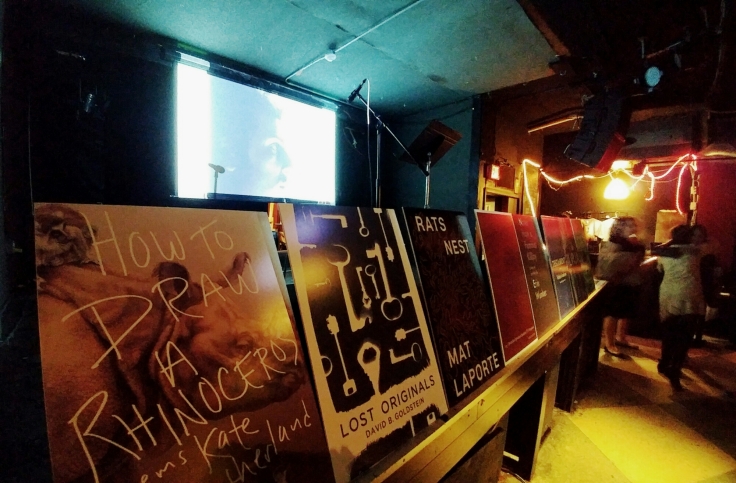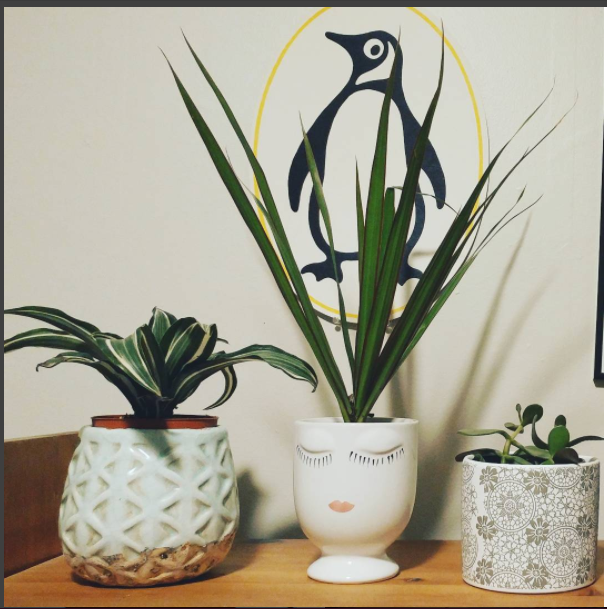

You’ve probably done this: walk into a book store, browse the titles, read some pages, see what’s new. After some perusing, you find a book you like. But, instead of bringing it to the cashier, you pick up your phone to price compare on Amazon. Or, similarly, you write the name down to check out your local used book store first.
Book stores are becoming showrooms. We like to look at the crisp new copies of books, but when it comes time to buy, we look for the cheapest option.
Some stores have embraced this, creating a show room feel for their store, and then offering to price match with lower prices found online. Used book stores can benefit from this behaviour by offering a cheaper price. Either way, many book shops are suffering from the multitude of cheaper avenues that have cropped up in recent years.
Indigo has taken the showroom setup to the extreme. Not only are customers meandering among books, they can fit themselves into an entire lifestyle around the theme of books. Reading a book? Why not do so with a cup of tea in a pretty mug? Or wouldn’t it be nice to read in a plush throw blanket? Indigo had mastered setting a mood for the shopper.
Though this can be seen as an abandonment of the focus on the book in favour of a commercialized deco store, I think they can live symbiotically. Readers fit into a marketable mold, and indigo offers more than other book stores by setting an entire lifestyle for the book lover and all the products you need to fulfill that life.
Stores need to adapt to the idea of thinking like the reader. Fulfilling the need to read and love of reading with books, but also the human desire to be a “book person.”
So, book stores. Help us be book people! Create a cozy atmosphere, sell some candles and tea, and encourage a life of reading.
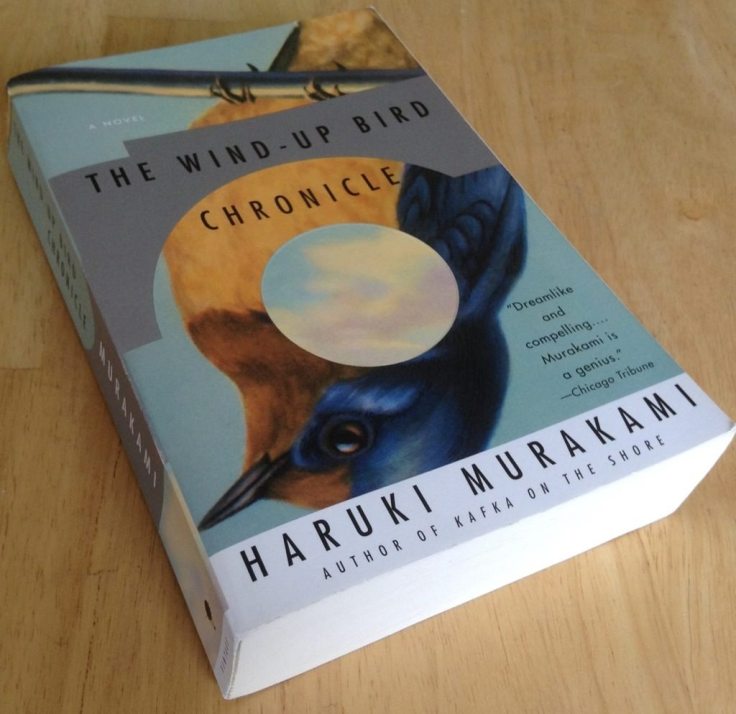
Murakami’s The Wind-Up Bird is dreamy — literally. After reading a chapter, you feel as if in a fog; you can’t decide what’s real or fiction. Murakami forces the reader to reconsider identity and linear time. Many of the characters seem to question who they really are, feeling as if they are stuck in another person’s body, or not fully connected to their own. Time lapses and overlaps and creates potholes in memory. Stories are told with a disregard to fact or with painful attention to detail.
Passing the border into the bizarre, this book can be disorienting, but ultimately it’s a striking piece of written work. One cannot deny how masterful the author is in creating a presence with his words, an atmosphere that envelopes the reader from beyond the pages.
Every character has an inexplicable aura. Supremely ordinary and yet casting an element of intrigue. The author seems to enjoy teasing his characters, but also cares deeply for them.
This novel may not be for everyone, there are graphic scenes and uncomfortable tensions, but I highly recommend this book for those who want to be cast into another world.

Books have to stay in tune with the digital age to maintain any saliency with younger crowds. So listen here authors, writers, publishers, and marketers: think video.
Countless reports are claiming that videos are the “future” of the internet. Young people online are increasingly engaging with and posting videos. Scroll through your Facebook feed — videos are lined up and playing automatically for ease of watching. Click onto a website, a video ad is already playing on the sidebar; scroll through Instagram, a Boomerang video is on a loop — it’s almost impossible to avoid.
Check out this report from Buffer that explains video is hitting its peak. Social media platforms like Facebook are capitalizing on video, but many companies have a lot of catching up to do. Now is the time to stay ahead of the herd.
How does this relate to the book world? Books are still loved for their antiquated charm. The smell of the pages, the feel of paper between fingertips, sketching a note in the margins — these moments are prevailing over the digitized story. But, that cannot be said for the promotion of and brand building of books.
Author Rachel Hollis has taken to the video scene show a “Day in the Life of an Author.” and she has thousands of views.
Bookworks and others are trying to get this knowledge to book creators. The post also gives examples of effective ways authors can use video to promote their book and their brand. The post also explains to readers how to use Youtube… which, really, I’d hope is second nature to anyone trying to reach an audience online.
Think of vloggers, they connect to their audience because they are relatable while also desirable. We see ourselves in them, but also want to be more like them. Companies are taking note — even Hootsuite CEO is using video to better connect with the platform’s users.
For authors, video is a great way to get personal with their fan base. Authors can give snippets of themselves #irl (in real life). Providing live video scenes of launches and events is a great way to connect a community online in real time. It’s the perfect opportunity to show a personality behind the book that is relatable and engages with readers.
The book scene needs to find complementary ways of including digital media into their world. People may not be totally sold on digital books, but there are tons of other ways that readers engage online that publishers can use to their advantage.
Post your ideas in the comments below!
The Garrison, 1197 Dundas St W
The Garrison is a favourite of mine. Like Studio Bar, there’s a bar in the front, but it is sectioned away from the stage and venue space in the back, which makes the event seem more intimate. Whoever is back there wants to hear the reader (or whomever the performer may be). It creates more of a buzz. There’s a small bar in the back as well. Also, if you missed dinner, you can grab a cheap taco or burrito, and they ‘aint half bad!
The Bell Jar, 2072 Dundas St W
This cute café is a popular spot for intimate poetry readings and other independent literary events. There are amazing treats and drinks. It makes for a good day or evening venue.
Studio Bar, 824 Dundas St W
Studio Bar is a perfect venue space. The front is furnished with seating beside a long bar. The entrance greets guests with a tapas bar where food can be ordered. Then, of course, is the stage venue in the back. People can sit along cushioned walls or stand up close to the star of the show.
Handlebar, 159 Augusta Ave
So hip. So Kensington market. This is a smaller more cozy venue. There’s a small space in the back where the performer can read, and the audience sits throughout the bar. It’s a cheap and easy spot for guests.
Supermarket, 268 Augusta Ave
Another great bar in Kensington Market, this venue has lots of space. There’s a big bar and seating in the front and then the stage sits in the back, slightly partitioned from rest of bar. Keep in mind, if this is a paid event, people can hear and see the stage fine from the bar space… so could be hard to encourage people towards paid space.

Joseph Boyden, with the support of many major authors, wrote an open letter criticizing UBC’s allegations against author and professor Steven Galloway. http://www.ubcaccountable.com/open.letter/steven-galloway-ubc/
It resulted in huge backlash and the tag #canlitaccountable
[CW: Galloway Case] “It reads like Canada’s most powerful authors saying be quiet” https://t.co/RxQzIQMUab #CanLit #CanLitAccountable
— AtiraWRS (@FreeOfViolence) 17 November 2016
Thank you Zoe. Disappointed in the signatories reification of a culture of suppression & silence re: CanLit abuse. #canlitaccountable https://t.co/0yPX7pyuwn
— Nikki Reimer 💀 (@NikkiReimer) 16 November 2016
For any person who has been a victim of abuse, this letter must have been devastating. It’s clear that the authors have made up their minds: Galloway is innocent. A letter of this nature sympathises with the accused, and in doing so encourages victims to be silent to the benefit of their harasser’s “reputation” and “health.”
What’s worse, is there is barely any mention of the potential victims. Allegations were made — a rare act due to the fear of being silenced, shamed, and/or ignored afterwards. The least they could have done was acknowledged those who may have been harmed. By focusing only on Galloway’s need for redemption and justice the authors for this letter either forget or, worse, ignore the dire problem of unreported sexual harassment.
“No wonder that women are hesitant to step forward to call out sexual harassment and violence. No wonder that few women report rape to the police. In our judicial and parajudicial systems, every accused person has a right to a vigorous defence.” Lawrence Hill wrote in response.
As such, this letter has been heartbreaking for fans of some of Canada’s greatest authors: Madeleine Thien, Yann Martel, Margaret Atwood, Lisa Moore, Michael Ondaatje, Vincent Lam, Jane Urquhart, and many more who signed the letter. (Note, some have since withdrawn their name from the letter.) Why would they show support for the accused and work to silence those who made the allegations?
I understand this. However, I sincerely hope the real problem here is not the intent of the letter, but how it was written — ironic considering it was penned by some of Canada’s best authors.
The insensitivities of the letter distract from some genuine problems — the problems, I’d like to believe, these authors intended to highlight:
The university’s procedures are murky at best
- The Memo
A memo was released saying allegations were made against Galloway and students should come forward should they have safety concerns. Of course, the memo was followed by major media scrutiny against the professor.
This is difficult. We have to admit that this hinders a crucial universal right: innocent until proven guilty. If we agree this is an important human right, how can this process be improved to protect the identity of both parties and others until guilt is proven?
- The independent investigation
According to this article, independent investigations are often to the benefit of the victim. It should allow a more comfortable platform for victims to come forward, and provide an easier process than criminal court which would require more evidence, fees, lawyers, and stress in general. Of course, independent investigations aren’t perfect and work to benefit the university as well. “In informal processes, offenders will almost never face harsh punishments such as suspension, expulsion, or in the case of a professor or staff member, firing. Instead, there may be mediation – with the victim – or education.” Was this the best way to find the truth behind the allegations and bring full justice?
- The “verdict”
In this case, the accusations against Galloway were found to be unsubstantiated and yet he was terminated from his position. This must be frustrating from both points of view. If he wasn’t guilty, why was he fired? If he was guilty, why were the claims said to be unsubstantiated? This is opaque and should be addressed by the university. If he is guilty, the victim(s) should feel that the complaints were acknowledged. And if not, a career should not be affected.
Asking these questions is important; blindly defending Galloway is the wrong way to go about it. While the authors were trying to break open a vague university process, they forgot to consider the implications if their wording. They weren’t asking for the benefit of everyone, but to the benefit of their friend and colleague.
No matter what, this letter should make everyone seriously consider how we ought to bring justice and fairness to cases of sexual harassment. What does it mean for the claims to be unsubstantiated? How can this be proven? What are the best ways to bring relief to a victim immediately while also taking the accused’s assumed innocence into account? How can we maintain privacy while also bringing light to unsafe situations?
Let me know your thoughts in comments below. This is important and delicate. I’d like to know what others think.
Oh no! The Giller Prize is tonight and I haven’t read all (*cough* any) of the nominees!
Not to fear! I’ve compiled a quick Goodreads list for you to catch up — then you can fake it ‘till you make it through the Giller Prize Bash
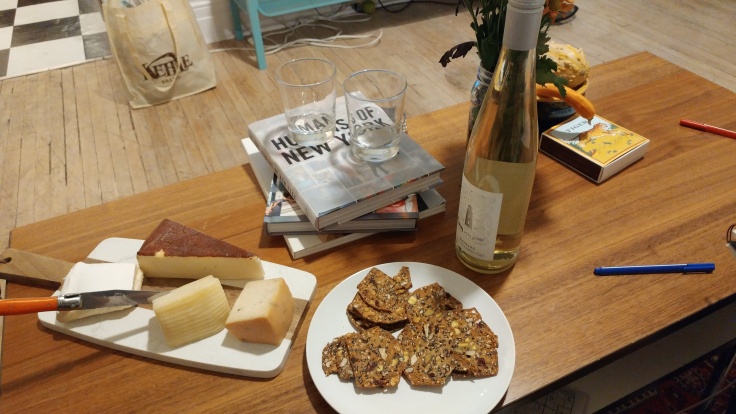
The Wonder, Emma Donoghue
https://www.goodreads.com/book/show/28449257-the-wonder?from_search=true
The Best Kind of People, Zoe Whittall
https://www.goodreads.com/book/show/29220492-the-best-kind-of-people?from_search=true
13 Ways of Looking at a Fat Girl, Mona Awad
https://www.goodreads.com/book/show/25716567-13-ways-of-looking-at-a-fat-girl?ac=1&from_search=true
The Party Wall, Catherine Leroux, Lazer Lederhendler
https://www.goodreads.com/book/show/27133420-the-party-wall?from_search=true
Yiddish for Pirates, Gary Barwin
https://www.goodreads.com/book/show/25893536-yiddish-for-pirates?ac=1&from_search=true
Do Not Say We Have Nothing, Madeleine Thien
https://www.goodreads.com/book/show/27876415-do-not-say-we-have-nothing?ac=1&from_search=true
Throughout a reader’s life, he/she/they will encounter some gems. A book that moves the reader deeply, worms into the memory, and changes the way they move through the world.
When a person finishes a truly penetrative book, it’s as if fiction and reality are blurred for a moment; there is a lingering weight in their heart as they acknowledge the end of beautiful story.
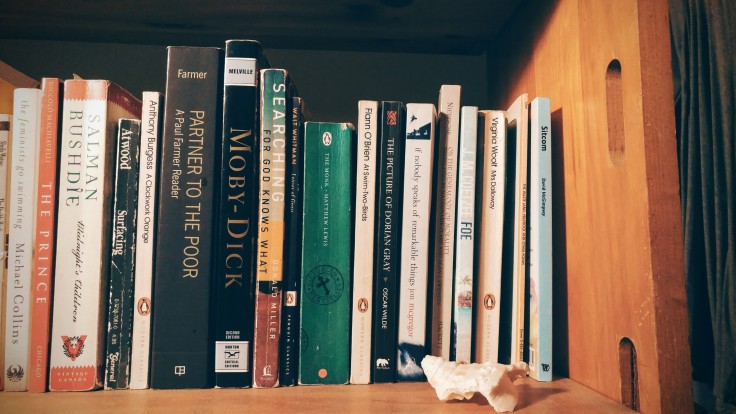
Why is your favourite book your favourite?
Some argue that book quality is subjective, that there are technically no “good” or “bad” books, only books a person prefers or dislikes. To some degree, this is true, there are high-quality books that haven’t captured my fancy. But there is a difference, in that I can still tell that they are high quality (whether they meet my preference or not). Some books ARE better than others, and it’s silly to argue otherwise. Some authors are masters of the craft. Here is what I say are necessary qualities for a superb work of fiction:
- Quiet/Observant
The author should hold an anthropological position. When they observe human mind and mannerisms with careful attention, it really makes a reader feel each character and scene they create. When a narrator points out how a character holds his hands as he speaks, how a fly looks stark against a white tablecloth, or how biting into a peach feels fuzzy against the tongue — bringing these little quiet, oft unnoticed, moments to life makes for fantastic fiction.
- Deliberative with vocabulary
Each word is carefully placed. They use a creative selection of vocabulary that isn’t obvious, but perfectly explains what the author is trying to create.
- Restrained
Nothing ruins a book like an author who can’t reign in their words. Suddenly the author’s voice rises above the characters’ because they cherish the words more than they do the goal of the story. Instead of being careful with their character and plot development, they can’t help but go on and on and on and on…
- Evocative
A novel that holds turmoil, love, woe, joy, anxiety, vengeance, despair, all of the above! BUT, in a way that feels real, makes them rise within the reader’s own chest in a way people can’t usually express in their own words.
- Creating a new lens
When a good books is complete, the reader should look out at the world as if they are a new person. Everything they say, see, and do should be tainted with the memory of that novel.
What’s new with the Toronto book scene? Here are some October highlights:
- Coach House book launch
- Word on the Street
- Toronto Book Awards
- HIJ Reading Series
The Presidential Debate(ha, no.)- Bob Dylan won the Nobel Prize in Literature

1. Coach House Books had a cozy setup at Studio Bar. I was awestruck by the words of Jordan Scott and by the warm tone of André Alexis. Laura Broadbent read one of her poems about Lao Tzu’s teacher application, which was charming and hilarious.
2. Books, books everywhere! I’ll admit, Word on the Street is basically a giant book sale. But, it can also be a great opportunity to check out the local book publishers, see what’s hot on the market, and find authors to sign your book.
3. Cordelia Strube won the Toronto Book Awards and the lit scene glimmered with excitement.
I loved this book, so well deserved. #tobookawards https://t.co/3zMeoz374u
— Florence McCambridge (@FlorenceMcC) 12 October 2016
Congratulations to Cordelia Strube-amazing writer and teacher #TObookawards https://t.co/uy8cO1zPBe
— Marisa Gelfusa (@GelfusaMarisa) 12 October 2016
4. The Toronto-based publishing house BookThug hosts a regular reading series called HIJ. This month, guests heard snippets from the The Naturalist by Alissa York, a hilarious parrot scene from Gary Barwin’s book Yiddish for Parrots, and André Alexis tried reading some new work. Also, they serve pie… so much pie.
5. The reading community was startled by Bob Dylan’s Nobel Prize win — Check out my post about that here: https://pricklypaper.wordpress.com/2016/10/18/are-lyrics-literature-is-bob-dylan-literary/
